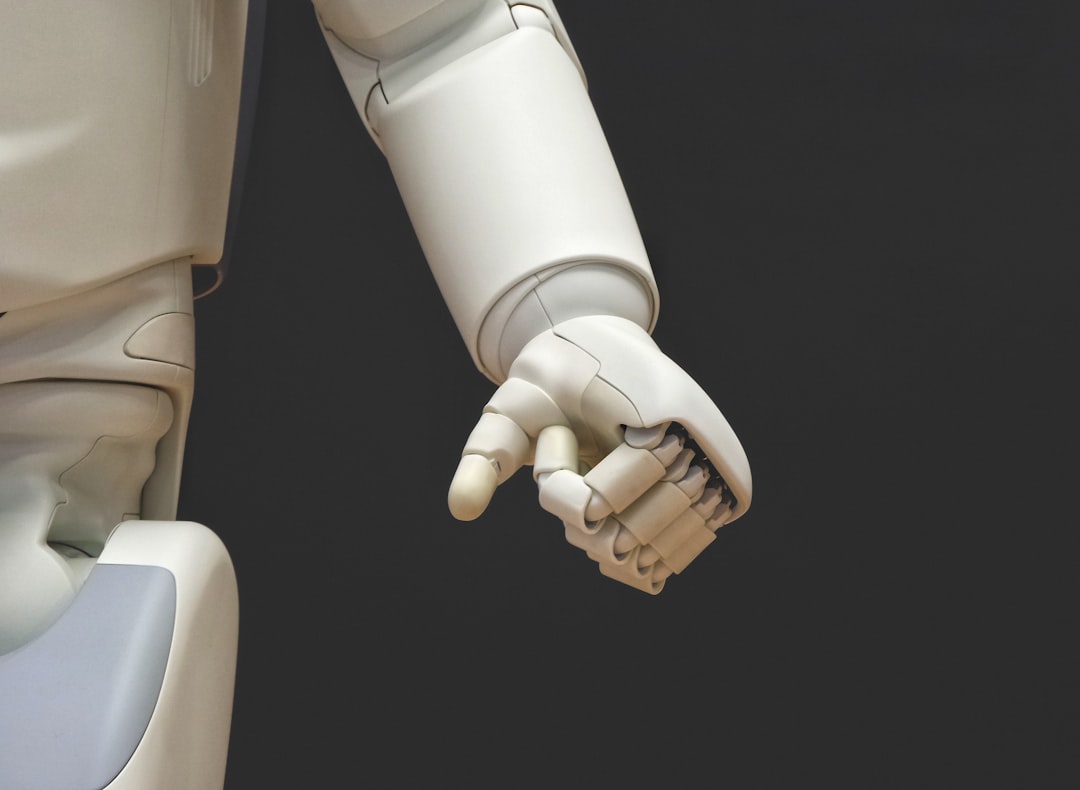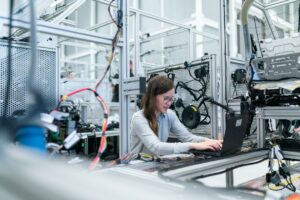Support our educational content for free when you purchase through links on our site. Learn more
Can a Robot Learn Like a Human? [2024]
Have you ever wondered if a robot can learn like a human? It’s a fascinating question that has captivated the minds of scientists, engineers, and enthusiasts alike. In this article, we will delve into the world of robotic learning and explore the capabilities and limitations of robots when it comes to acquiring knowledge and skills. So, buckle up and get ready to dive into the exciting realm of robot learning!
Table of Contents
- Quick Answer
- Quick Tips and Facts
- Background: The Quest for Human-like Learning
- 1. Can Robots Learn from Experience?
- 2. How Do Robots Learn?
- 3. Can Robots Learn New Tasks?
- 4. What Are the Challenges for Robots in Learning?
- 5. Can Robots Learn Like Humans?
- 6. How Do Robots Learn to Move Efficiently?
- 7. What Are the Latest Developments in Robot Learning?
- FAQ
- Conclusion
- Recommended Links
- Reference Links
Quick Answer
Robots have made significant strides in learning new tasks, but they still have a long way to go before they can match the learning capacity of humans. While robots can acquire knowledge and skills through various techniques such as reinforcement learning and deep learning, they face challenges in adapting to unstructured environments, dealing with unforeseen circumstances, and generalizing their learning to different situations. However, researchers and engineers are continuously working on improving robot learning capabilities, and we can expect exciting advancements in the future.
CHECK PRICE on: Robotic Learning Tools | Robotic Learning Kits | Robotic Learning Platforms
Quick Tips and Facts
- Robots can learn new tasks through techniques like reinforcement learning, where they receive rewards or punishments based on their actions.
- Deep learning, a subset of machine learning, enables robots to learn from large amounts of data and make predictions or decisions.
- Robots face challenges in learning from few examples, adapting to unstructured environments, and interacting intelligently with humans.
- Researchers are exploring ways to improve robot learning, such as combining deep learning and reinforcement learning techniques.
- Robot learning has applications in various fields, including healthcare, manufacturing, and agriculture.
Background: The Quest for Human-like Learning
Robots have come a long way in recent years, with advancements in artificial intelligence and machine learning enabling them to perform complex tasks. However, when it comes to learning, robots still have much to learn from their human counterparts. Humans possess remarkable learning abilities, allowing them to acquire knowledge and skills with relative ease. From learning a new language to mastering a sport, humans can adapt and excel in various domains.
Roboticists and researchers have been striving to replicate this learning capacity in robots. The goal is to develop robots that can learn from experience, acquire new skills, and adapt to different situations. While robots have made significant progress in learning new tasks, they still fall short of human-like learning capabilities.
1. Can Robots Learn from Experience?
Yes, robots can learn from experience. Through techniques like reinforcement learning, robots can acquire knowledge and skills by interacting with their environment. Reinforcement learning involves providing robots with rewards or punishments based on their actions, allowing them to learn which actions lead to desirable outcomes.
For example, a robot can learn to navigate a maze by receiving positive reinforcement when it takes the correct path and negative reinforcement when it takes the wrong path. Over time, the robot learns to navigate the maze efficiently by associating specific actions with positive outcomes.
2. How Do Robots Learn?
Robots learn through a combination of techniques, including machine learning, deep learning, and reinforcement learning. Machine learning algorithms enable robots to analyze data, identify patterns, and make predictions or decisions based on the data.
Deep learning, a subset of machine learning, involves training neural networks with large amounts of data to recognize patterns and make accurate predictions. This technique has been instrumental in enabling robots to learn from vast datasets and perform complex tasks.
Reinforcement learning, as mentioned earlier, allows robots to learn through trial and error by receiving rewards or punishments based on their actions. This technique has been particularly successful in teaching robots to perform tasks that require decision-making and adaptation.
3. Can Robots Learn New Tasks?
Yes, robots can learn new tasks. With the right algorithms and training, robots can acquire new skills and perform tasks they were not initially programmed for. This ability to learn new tasks is crucial for robots to adapt to changing environments and perform a wide range of functions.
For example, a robot designed for assembly line tasks can be trained to perform a different task, such as sorting objects, by providing it with the necessary training data and using appropriate learning algorithms. This flexibility in learning new tasks makes robots versatile and adaptable to different scenarios.
4. What Are the Challenges for Robots in Learning?
While robots have made significant progress in learning new tasks, they face several challenges that hinder their ability to learn like humans. Some of the key challenges include:
-
Unstructured Environments: Robots struggle to adapt to unstructured environments where there is a lack of predefined rules or patterns. Unlike humans, who can quickly adapt to new situations, robots often require extensive training and fine-tuning to operate effectively in unstructured environments.
-
Dealing with Unforeseen Circumstances: Robots find it challenging to handle unforeseen circumstances or events that deviate from their training data. Humans can quickly adapt and respond to unexpected situations, whereas robots may struggle or fail when faced with unfamiliar scenarios.
-
Learning from Few Examples: Humans can learn new tasks with minimal examples or instructions. In contrast, robots often require a significant amount of training data to learn a new task effectively. This limitation makes it challenging for robots to learn quickly and efficiently.
-
Common Sense and Background Knowledge: Humans possess a vast amount of common sense and background knowledge about the world, which helps them make sense of new information and learn new tasks. Robots, on the other hand, lack this inherent knowledge and often require explicit instructions or training data to understand and learn new concepts.
-
Generalizing Learning to Other Circumstances: Humans can generalize their learning from one task or domain to another, allowing them to apply their knowledge and skills in different contexts. Robots, however, often struggle to generalize their learning and may require additional training or fine-tuning to perform well in new situations.
-
Intelligent Interaction with People: Humans are skilled at interacting and communicating with each other, using verbal and non-verbal cues to convey information and understand each other’s intentions. Robots face challenges in understanding and responding to human communication, limiting their ability to learn from human interactions effectively.
-
Creativity: Humans possess the ability to think creatively, come up with innovative solutions, and adapt their learning strategies. Robots, while capable of learning and problem-solving, lack the creative thinking abilities that humans possess.
5. Can Robots Learn Like Humans?
While robots have made significant strides in learning new tasks, they still have a long way to go before they can match the learning capacity of humans. Humans possess unique cognitive abilities, such as abstract reasoning, creativity, and the ability to learn from minimal examples, that are challenging to replicate in robots.
However, researchers and engineers are continuously working on improving robot learning capabilities. By combining techniques like deep learning and reinforcement learning, they aim to bridge the gap between robot learning and human learning. These advancements hold the promise of robots that can learn more efficiently, adapt to new situations, and perform complex tasks with minimal human intervention.
6. How Do Robots Learn to Move Efficiently?
Efficient movement is a crucial aspect of robot learning, especially in tasks that involve physical interaction with the environment. Researchers have been exploring various techniques to teach robots how to move efficiently.
One approach is to use a combination of deep learning and reinforcement learning, known as deep reinforcement learning. This technique involves training neural networks to learn optimal control policies for robot movement. By providing the robot with rewards or punishments based on its movement performance, it can learn to move in a way that maximizes rewards and minimizes penalties.
For example, in the field of robotics, researchers have used deep reinforcement learning to teach robots how to walk, run, and perform complex maneuvers. By simulating various scenarios and providing the robot with feedback on its movement, it can learn to move efficiently and adapt to different environments.
7. What Are the Latest Developments in Robot Learning?
Robot learning is a rapidly evolving field, with new developments and advancements being made regularly. Some of the latest developments in robot learning include:
-
Transfer Learning: Transfer learning involves leveraging knowledge and skills learned in one task or domain to improve performance in another task or domain. This technique allows robots to generalize their learning and adapt it to new situations more effectively.
-
Cognitive Robotics: Cognitive robotics focuses on developing robots that possess cognitive abilities similar to humans, such as perception, reasoning, and decision-making. By incorporating cognitive capabilities into robots, researchers aim to enhance their learning and problem-solving abilities.
-
Human-Robot Collaboration: Human-robot collaboration involves designing robots that can work alongside humans, learning from their actions and interacting intelligently with them. This field aims to create robots that can learn from human expertise and assist humans in various tasks.
-
Explainable AI: Explainable AI focuses on developing algorithms and techniques that enable robots to explain their decision-making processes and actions. This transparency in robot learning helps build trust and understanding between humans and robots.
These developments, along with ongoing research and advancements in artificial intelligence and machine learning, hold great promise for the future of robot learning.
FAQ
Why can’t AI learn like humans?
AI, including robots, cannot learn like humans due to several reasons. Humans possess unique cognitive abilities, such as abstract reasoning, creativity, and the ability to learn from minimal examples, that are challenging to replicate in AI systems. Additionally, humans have a vast amount of common sense and background knowledge about the world, which helps them make sense of new information and learn new tasks. AI systems lack this inherent knowledge and often require explicit instructions or training data to understand and learn new concepts.
Will robots ever have the ability to think like humans?
While it is challenging to predict the future with certainty, it is unlikely that robots will ever have the ability to think exactly like humans. Human thinking involves complex cognitive processes, emotions, and consciousness, which are currently beyond the capabilities of AI systems. However, researchers and engineers are continuously working on developing AI systems that can mimic certain aspects of human thinking and decision-making.
Can a robot act like a human?
Robots can be programmed to mimic certain human behaviors and actions, but they cannot fully replicate the complexity of human behavior. While robots can perform tasks that resemble human actions, they lack the underlying emotions, intentions, and consciousness that drive human behavior. However, advancements in robotics and AI have enabled robots to interact with humans more intelligently and adapt their behavior based on human cues.
Read more about “Do Robots Need to be Trained? …”
Can robots imitate humans?
Robots can imitate certain human actions and behaviors through techniques like motion capture and machine learning. By analyzing human movements and training algorithms on this data, robots can replicate human actions with a high degree of accuracy. However, it is important to note that this imitation is limited to physical actions and does not encompass the full range of human behavior and cognition.
Conclusion
In conclusion, while robots have made significant progress in learning new tasks, they still have a long way to go before they can match the learning capacity of humans. Robots can learn from experience through techniques like reinforcement learning and deep learning, but they face challenges in adapting to unstructured environments, dealing with unforeseen circumstances, and generalizing their learning to different situations. However, researchers and engineers are continuously working on improving robot learning capabilities, and we can expect exciting advancements in the future.
If you’re interested in learning more about robotics and robot learning, check out these related articles on Robot Instructions™:
And if you’re curious about whether robots need to be trained, be sure to read our article on Do Robots Need to be Trained? 2023.
Recommended Links
- CHECK PRICE on: Robotic Learning Tools | Robotic Learning Kits | Robotic Learning Platforms
- Shop Robotic Learning Tools | Robotic Learning Kits | Robotic Learning Platforms on Walmart
- Shop Robotic Learning Tools | Robotic Learning Kits | Robotic Learning Platforms on eBay
- Shop Robotic Learning Tools | Robotic Learning Kits | Robotic Learning Platforms on Etsy
- Robots that learn like humans – TU Delft





